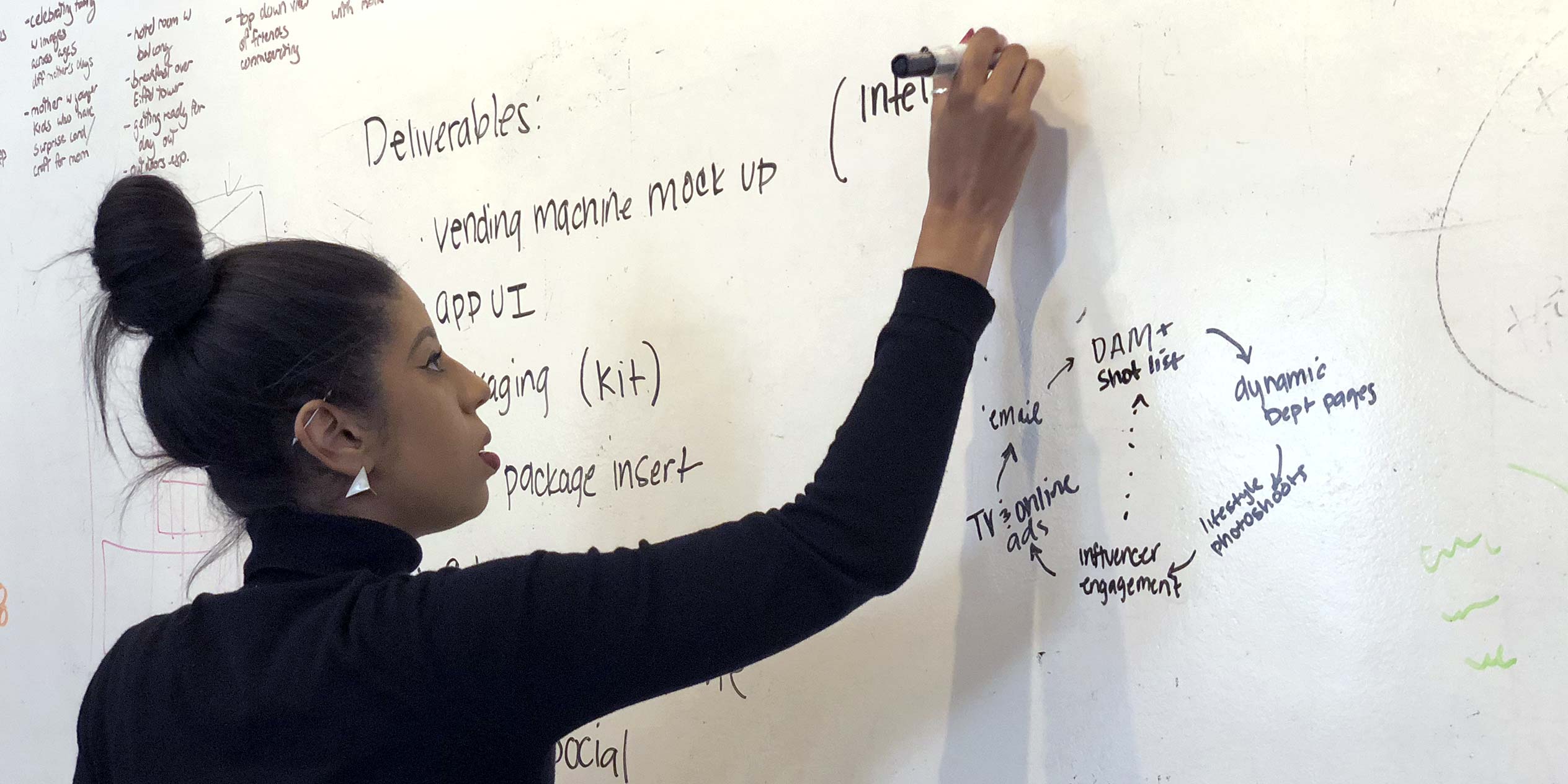As more organizations are embracing design, designers now have more opportunity than ever to help innovate, drive change, and strengthen business impact. Here are some ways young designers starting their careers can capitalize on this emerging opportunity.
Master your craft
When transitioning from the academic to the professional world, make sure your work and portfolio showcase foundational design skills, such as typography, composition, use of color, and layout. These skills will serve as a strong base regardless of what direction your career ends up taking (User Experience, Visual, Motion, etc). Additionally, become adept at presenting your process and your work. Storytelling is a crucial aspect of a successful design career.
Add value (and communicate it)
Designers, at their best, are creative problem solvers. As businesses embrace design as added value in today’s economy, learn to frame your work around the business objective it’s enhancing. For example, are you helping a client get more customers? Are you making an application more accessible? Are you streamlining a workflow (i.e. how a patient schedules an appointment)? Understand the what and why behind the work you are doing and be able to properly communicate how your design is a solution that meets or addresses the need. This ability will not only help you become a better designer, but will help others understand the value of your work.

Learn through failure
Unlike in an academic setting, design does not happen in a vacuum. It usually results from a business need and it responds to the context of a given audience. There will be multiple times where your proposed solution—or as I like to call it, your design hypothesis—will fail to address a business need or take into account a segment of the audience. When that happens, take some time to understand how your design hypothesis fell short and learn from those shortcomings. Next time around, apply those learnings. If you approach your career with this mindset, you’ll continuously learn new things and refine and improve your skills. When young designers are inevitably confronted with failure, this quote from Tim Brown, CEO of IDEO, always comes in handy: “Don’t think of it as failure, think of it as designing experiments through which you’re going to learn.”
Embrace constructive criticism
Everyone struggles when their work is questioned or doubted, but learning how to deal with criticism will bring out the best in you and your work. It’s an especially important skill set when listening to and communicating with clients. Just remember, it’s not personal. Leverage your peers to develop a thick skin and learn how to respond to criticism by seeking out constructive feedback from more experienced designers.

Grow your network
Cultivate a professional network full of collaborators, mentors, and potential employers to stay plugged into the local design community. Make sure you’re meeting as many people as you can and participating in online discussions around your favorite designers, projects, and interests. Sites like Dribbble and designer community The American Institute of Graphic Arts (AIGA) are great places to start. The secret to networking? The earlier you start, the better.
This is just an initial list. What tips would you share with young designers?

